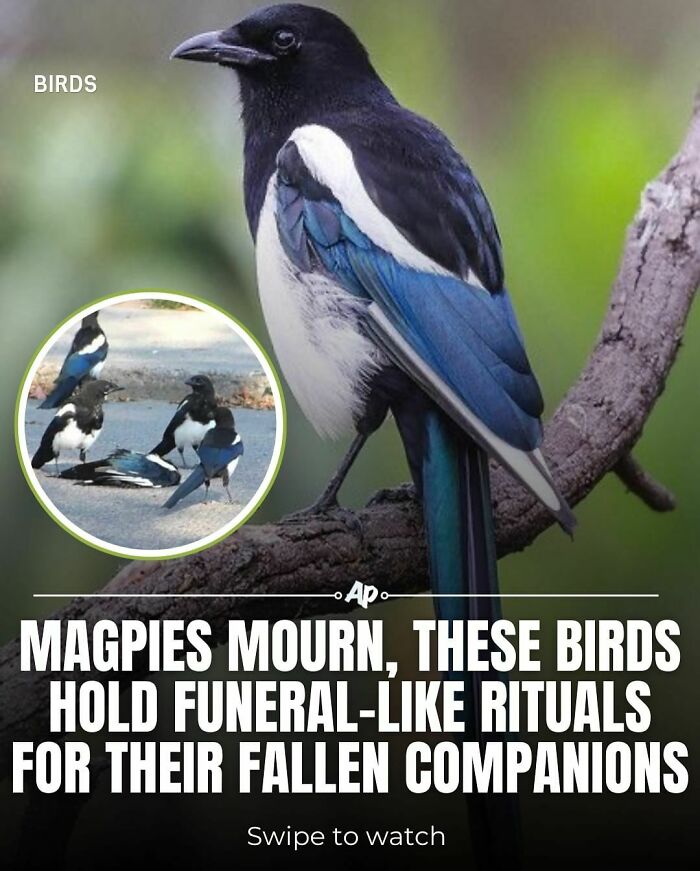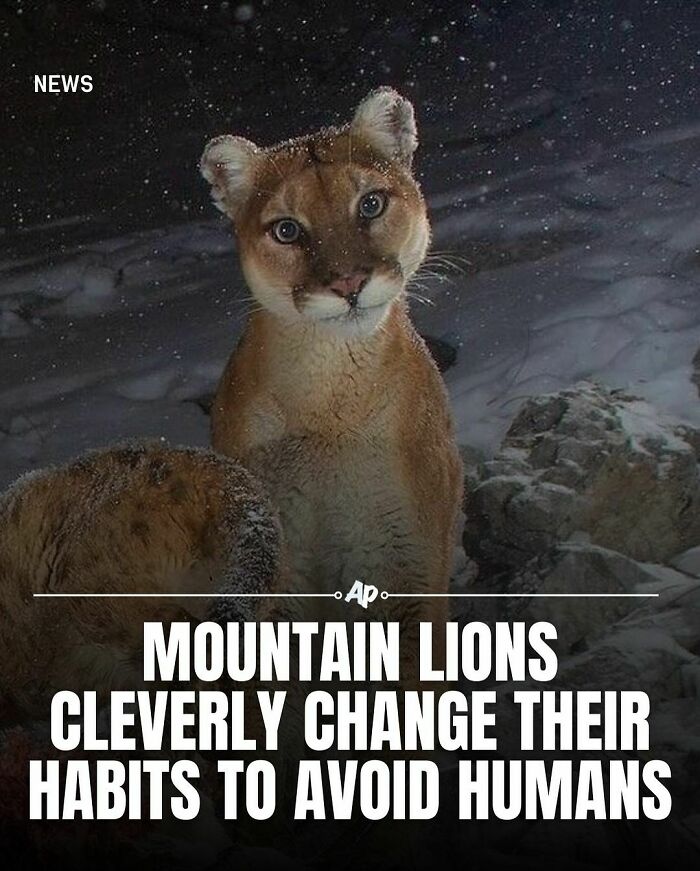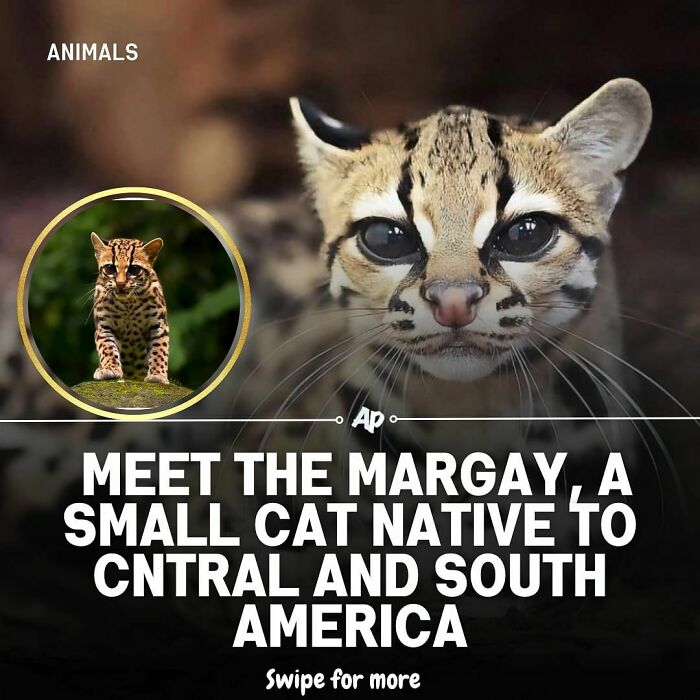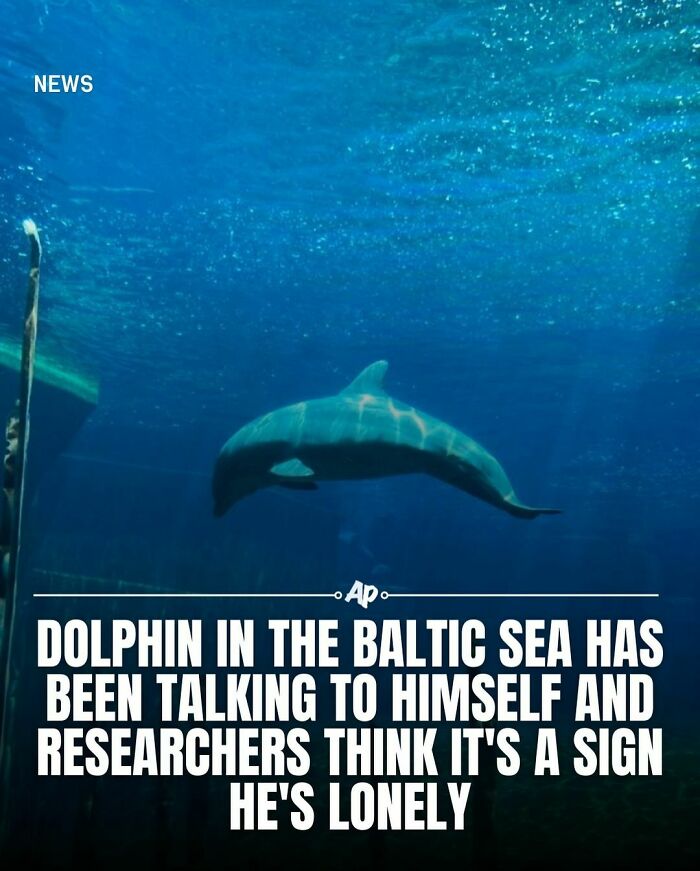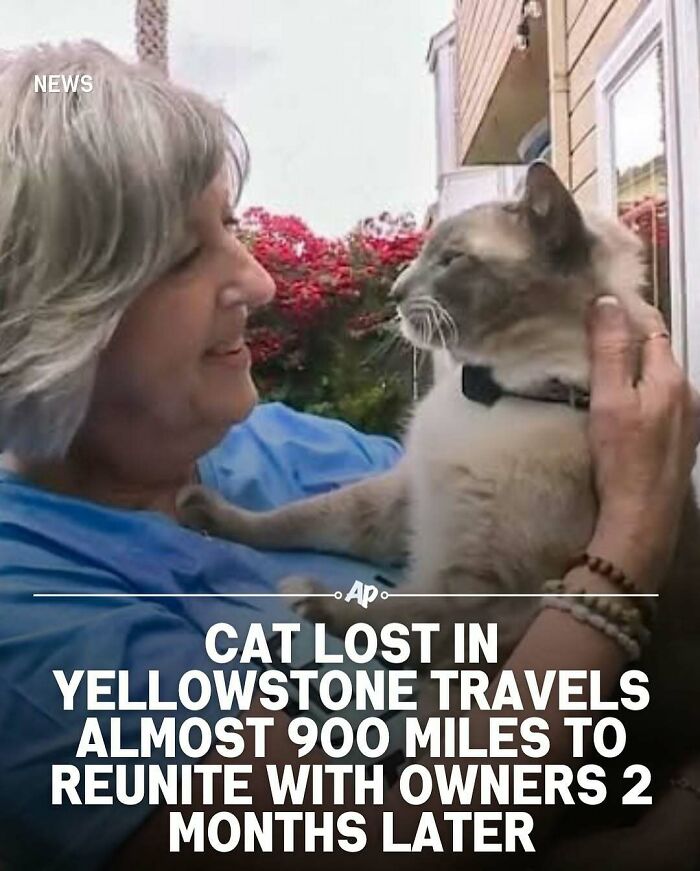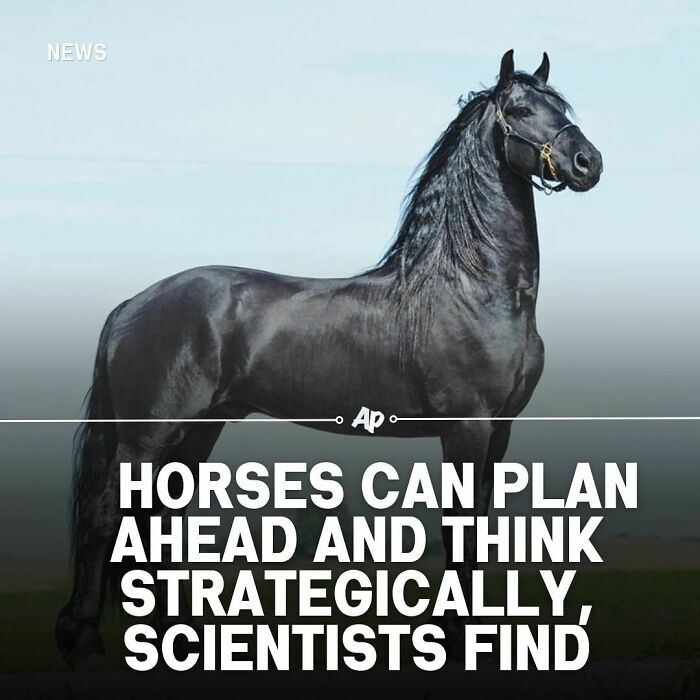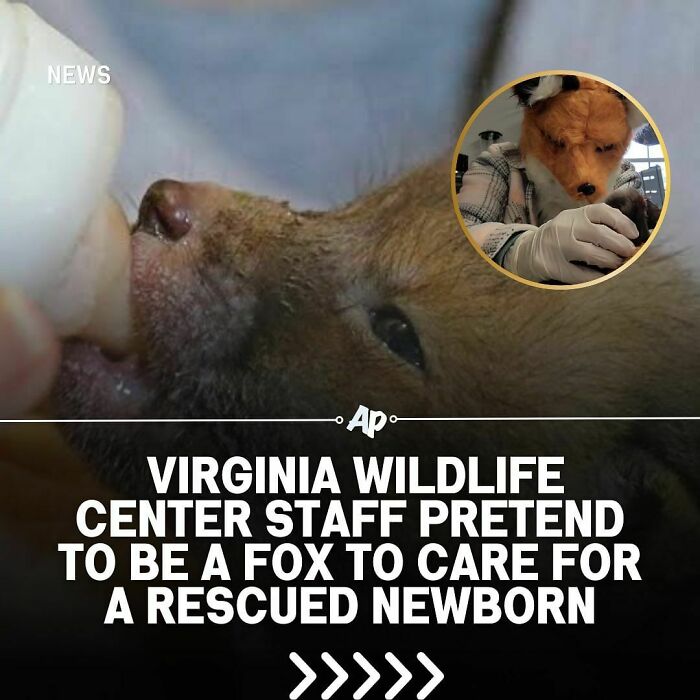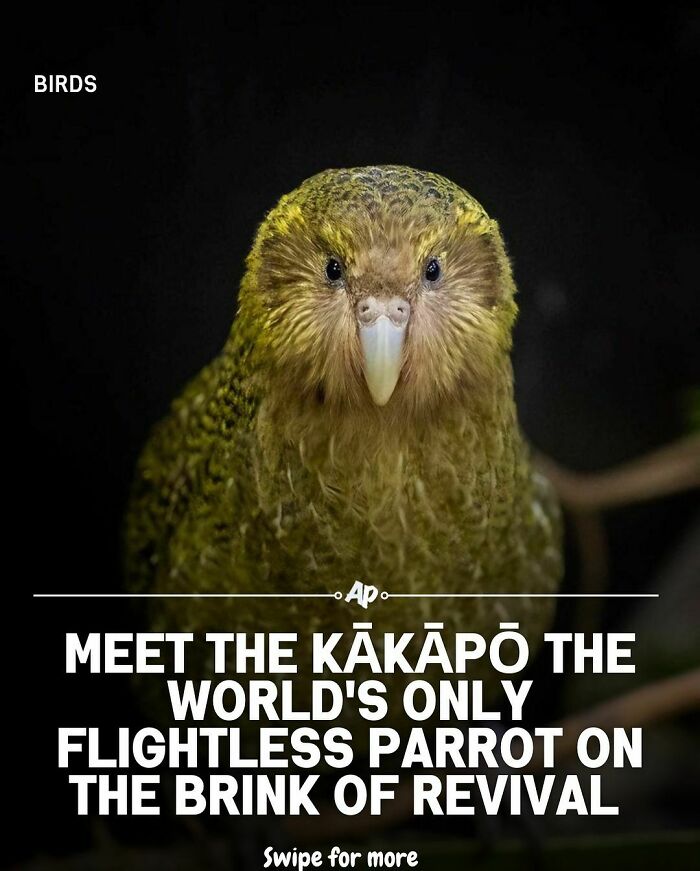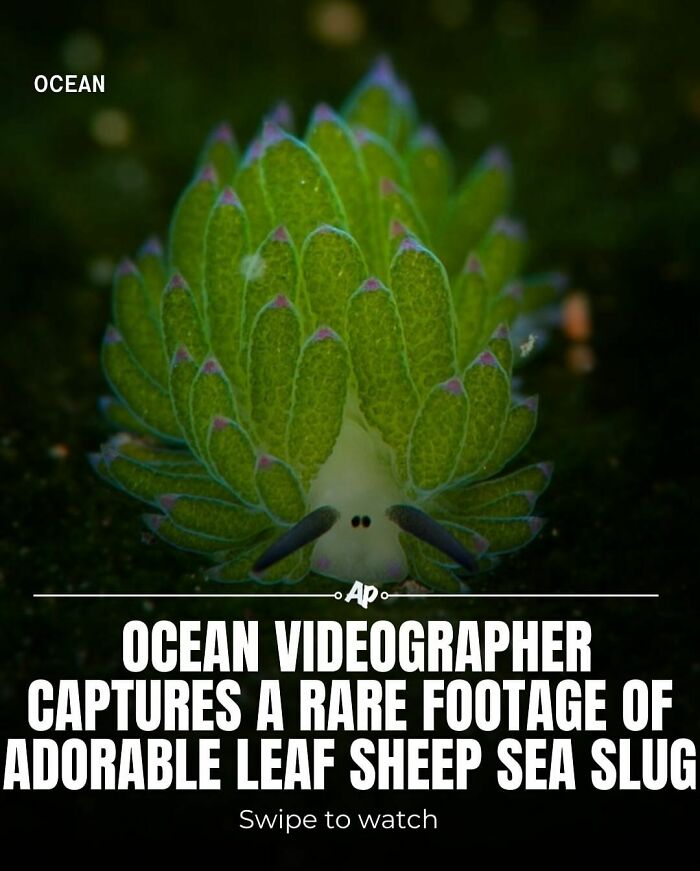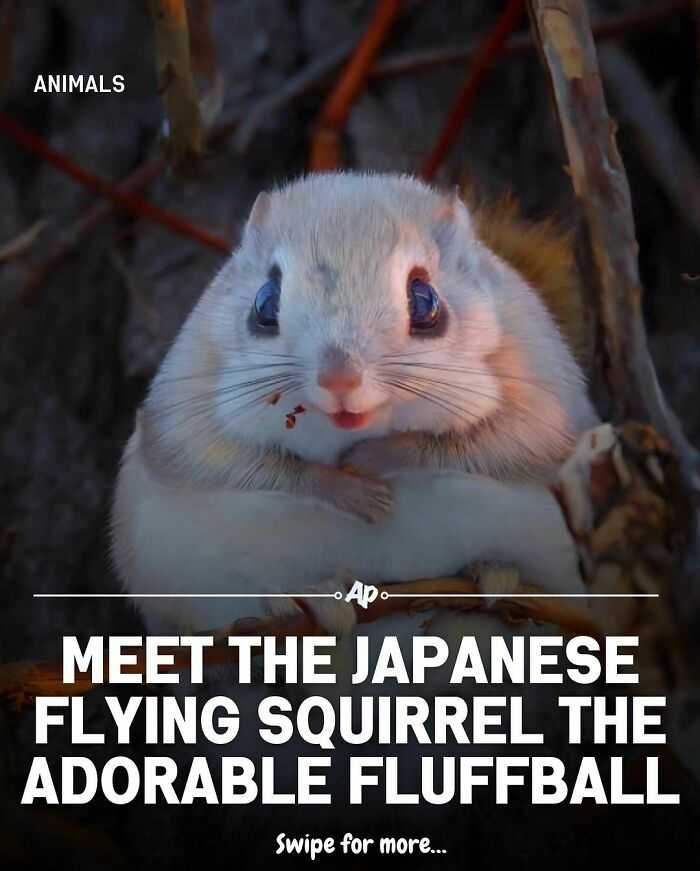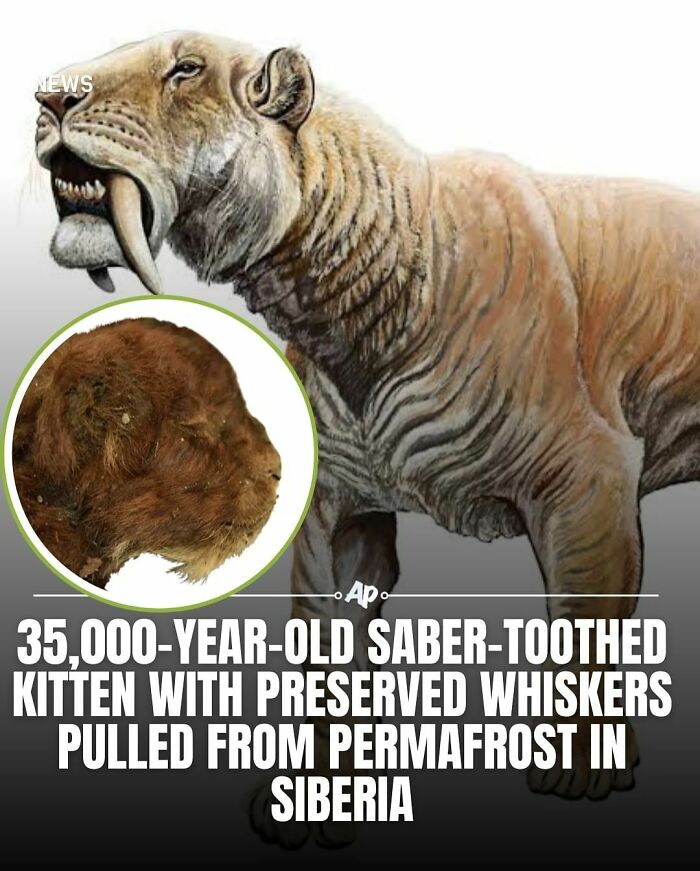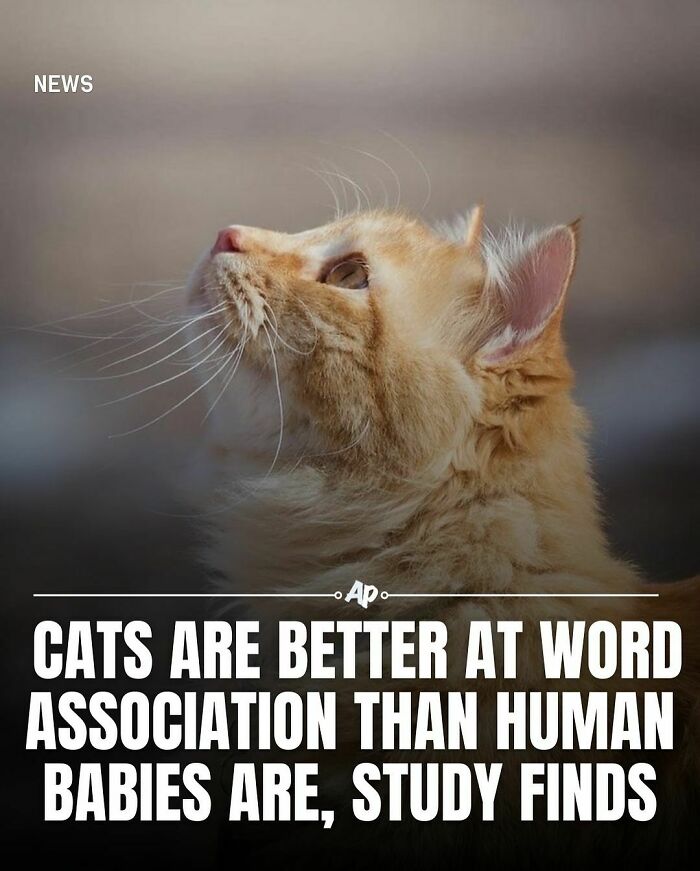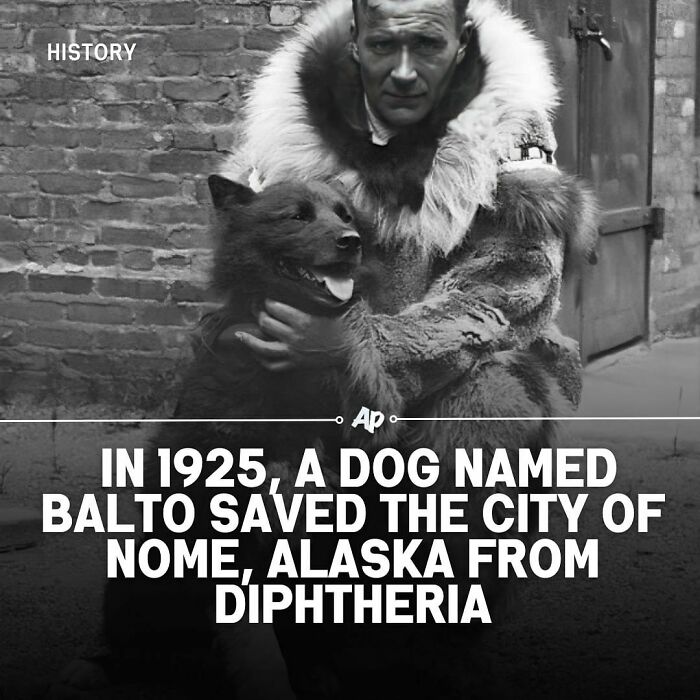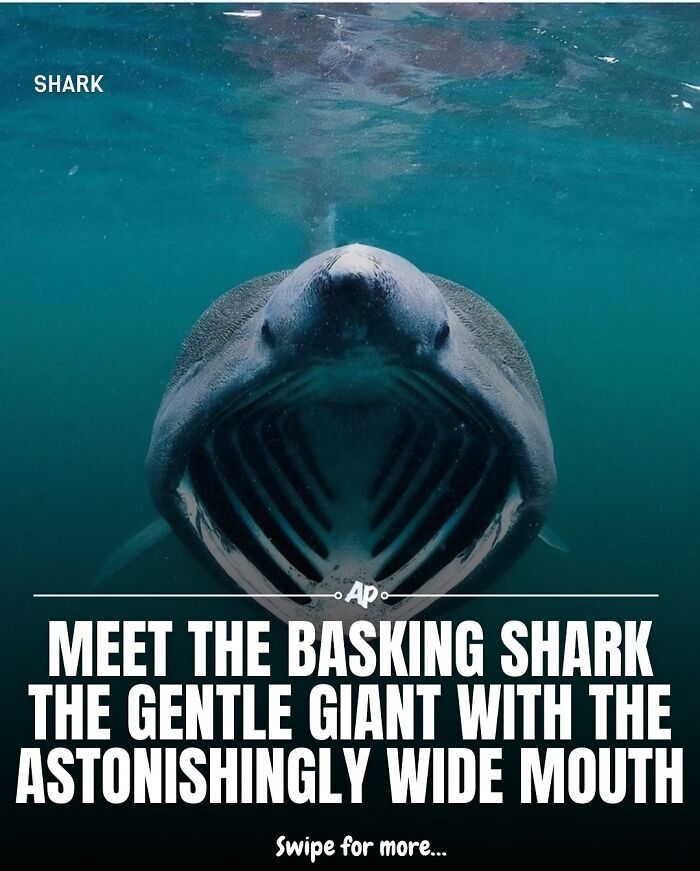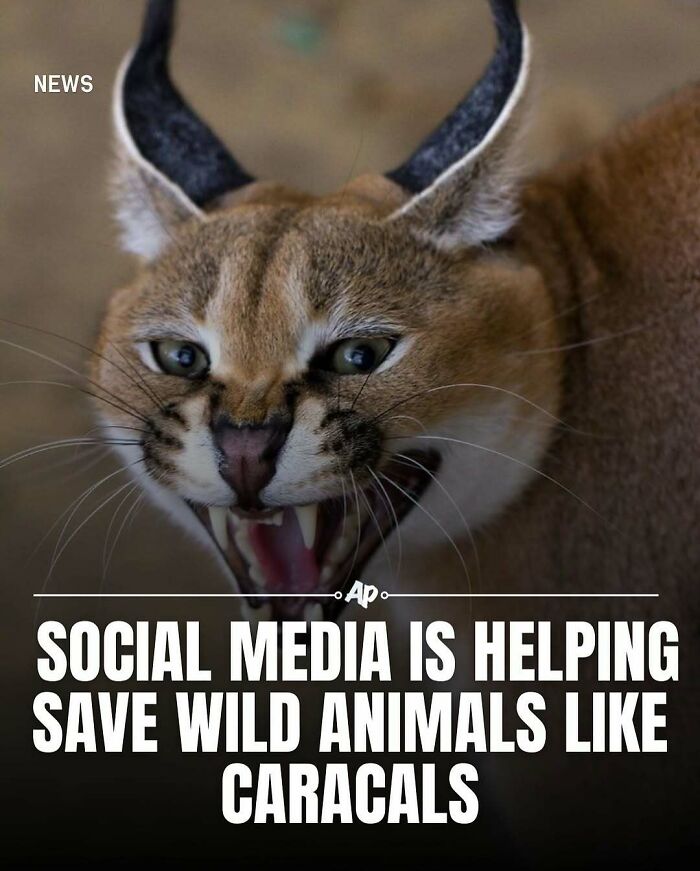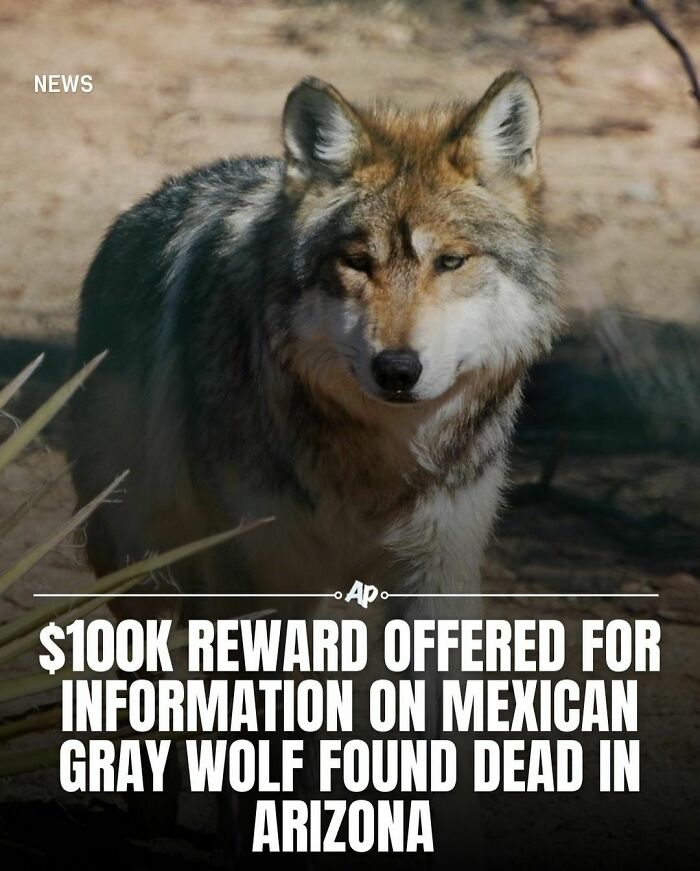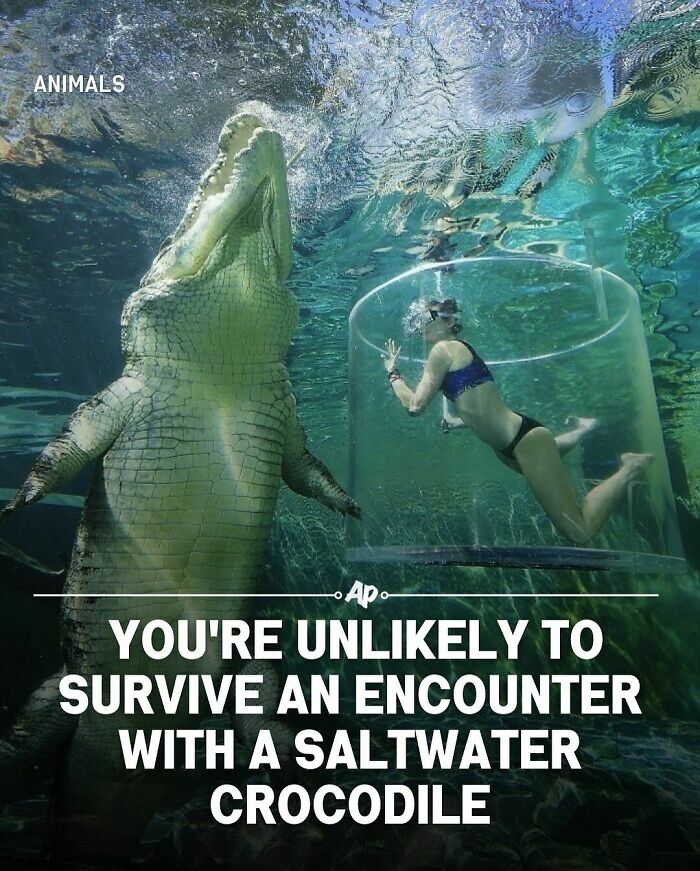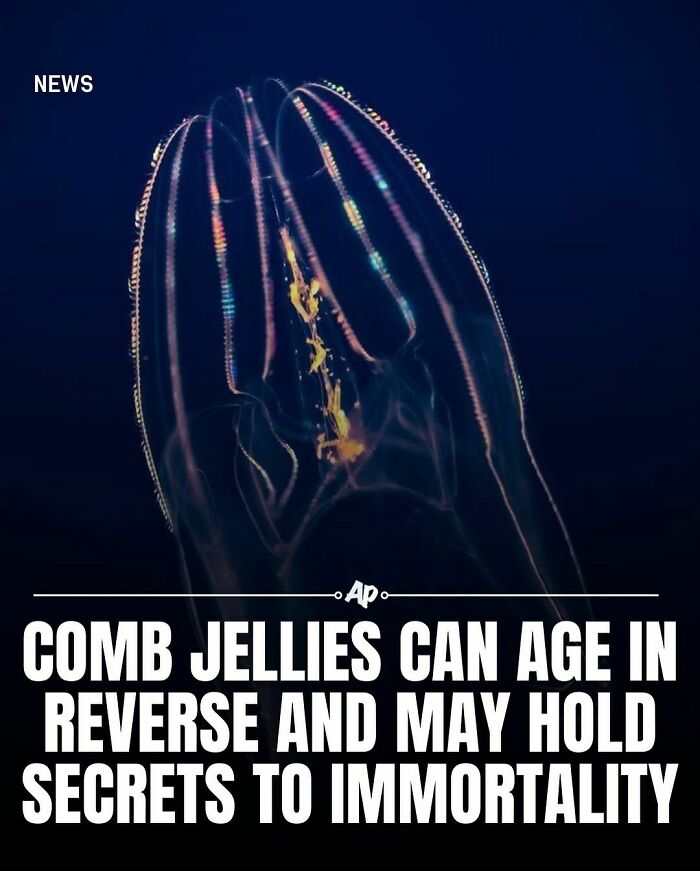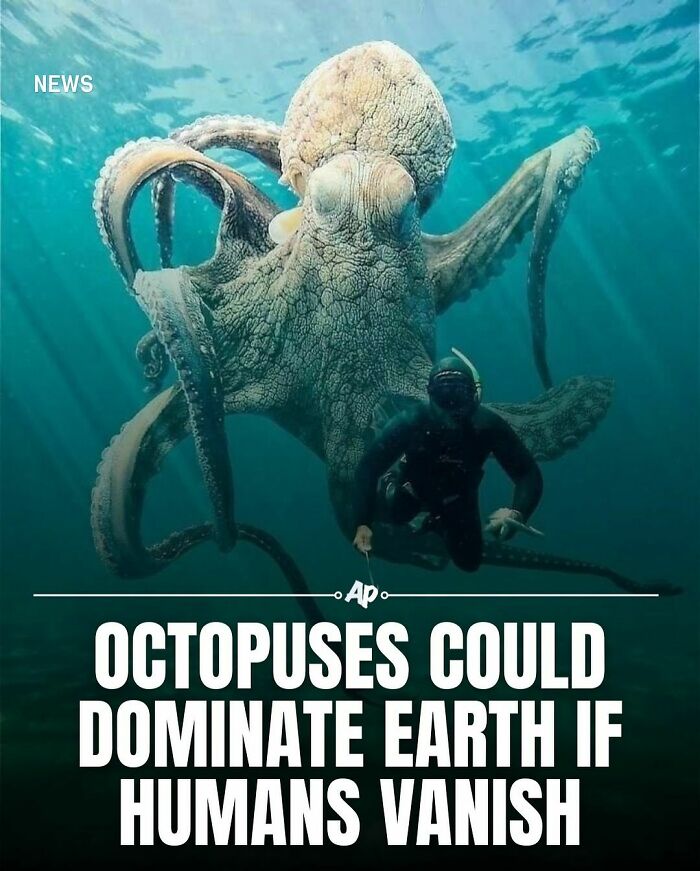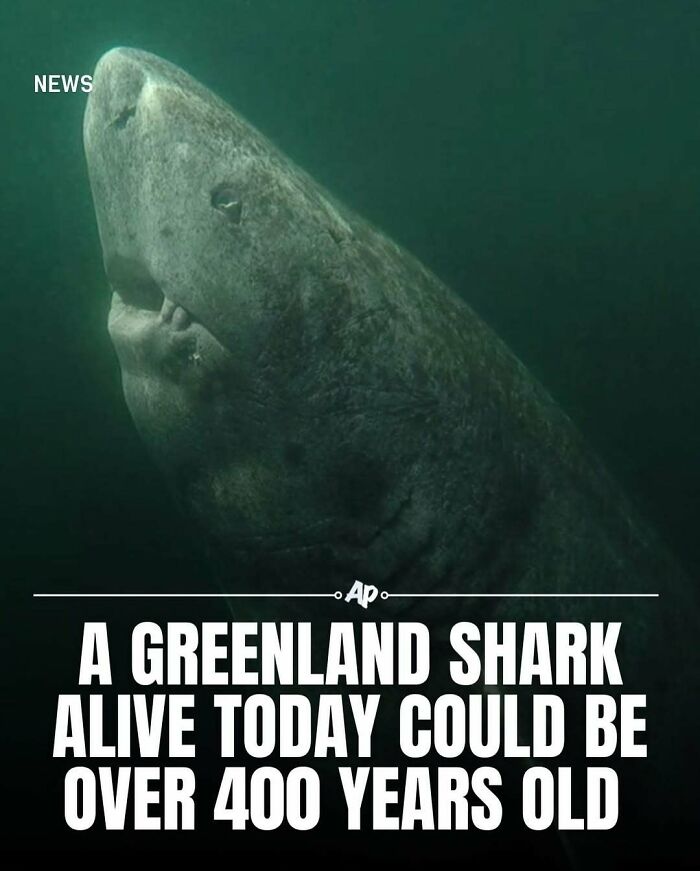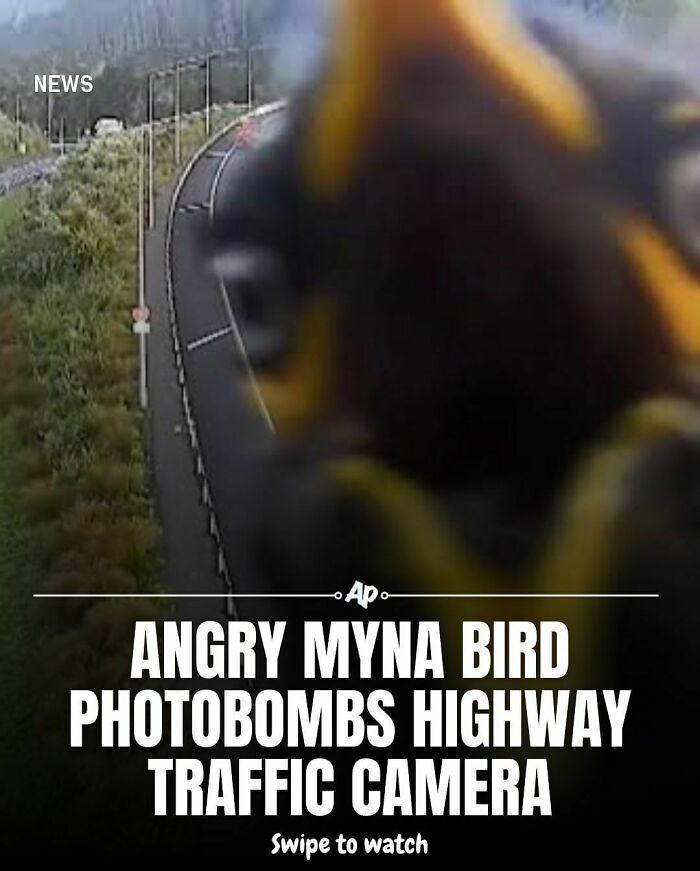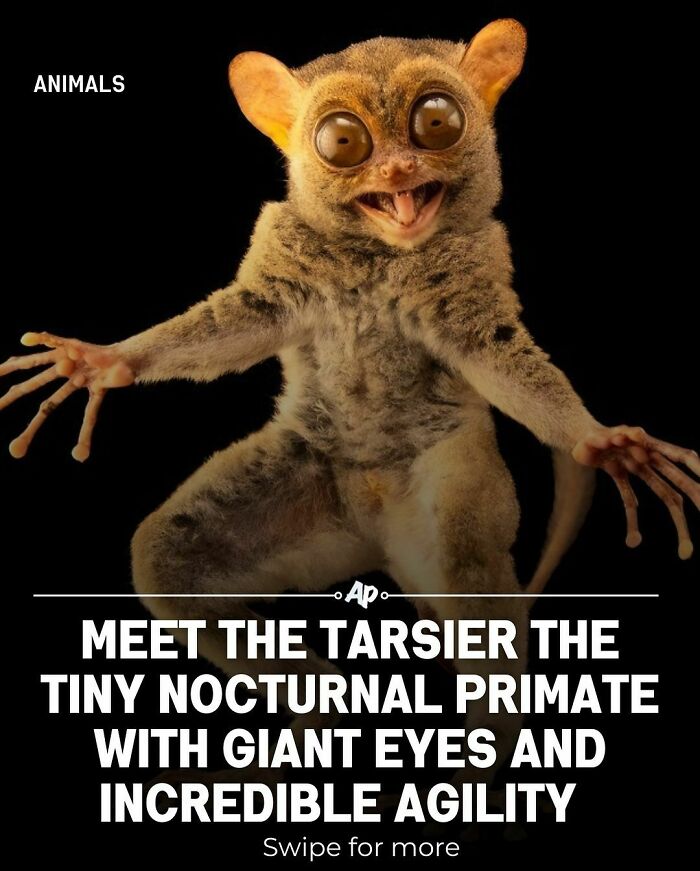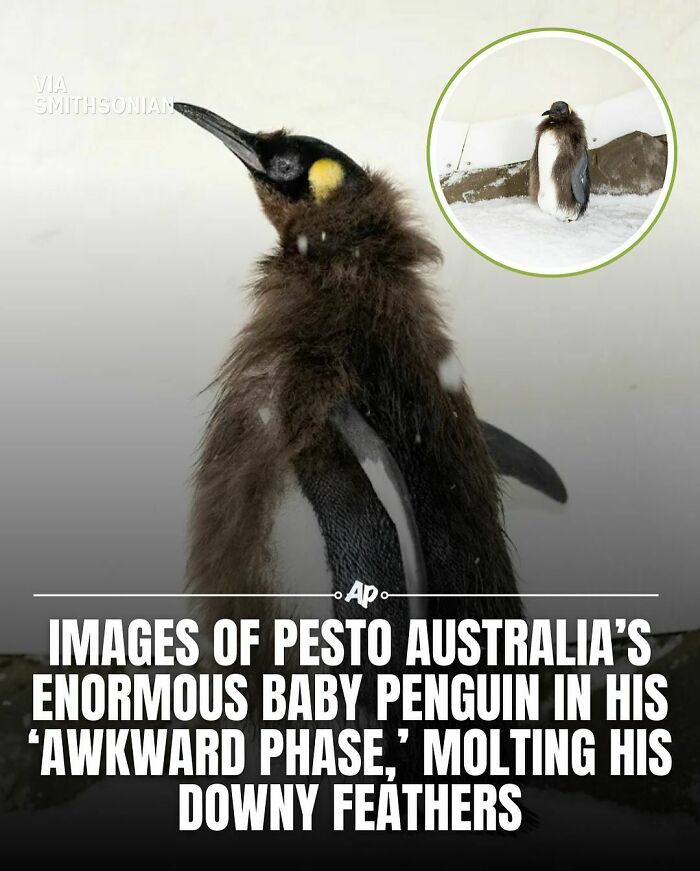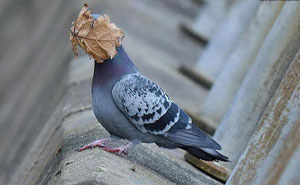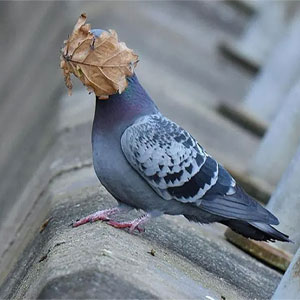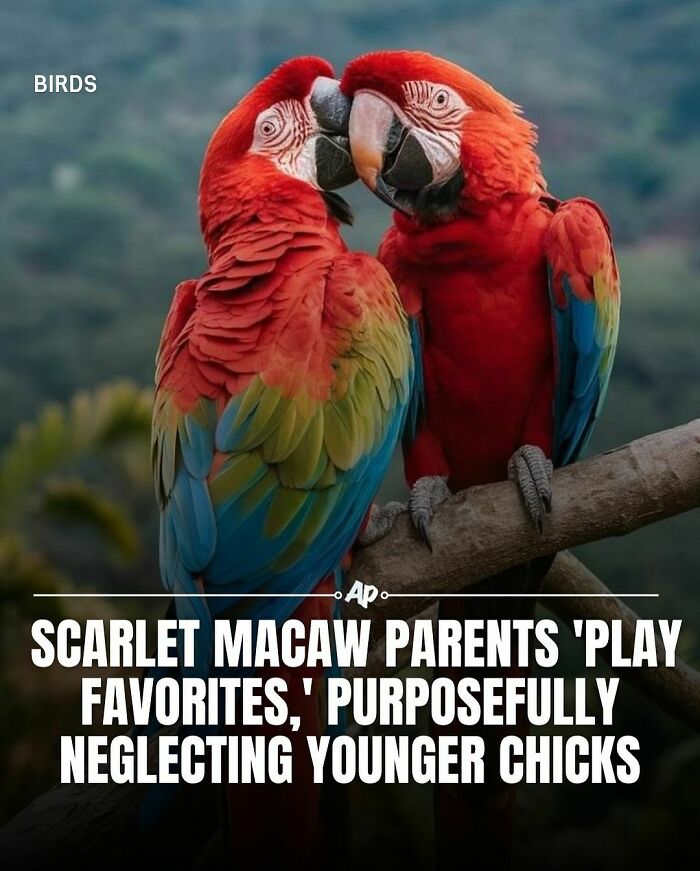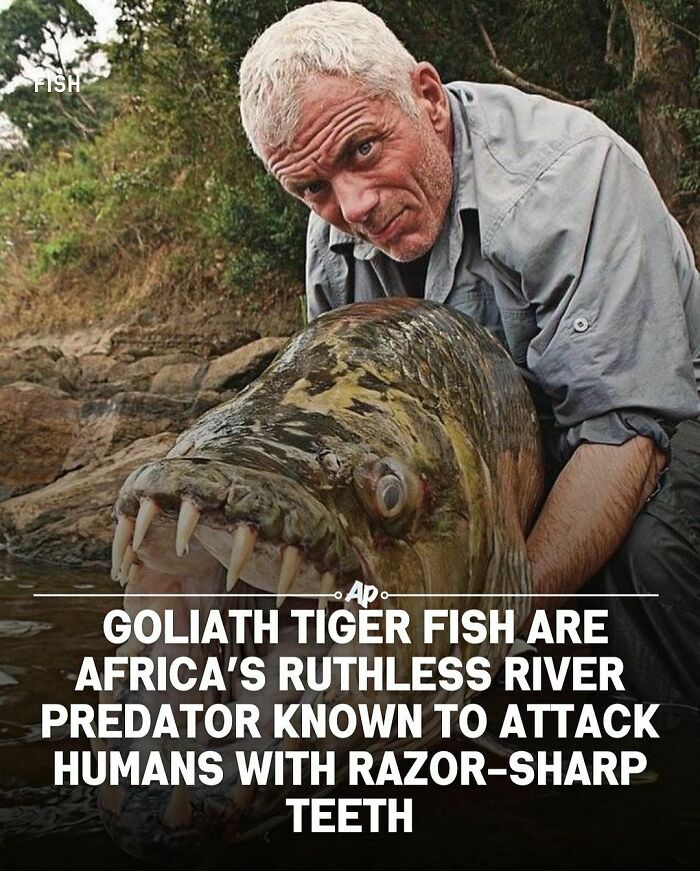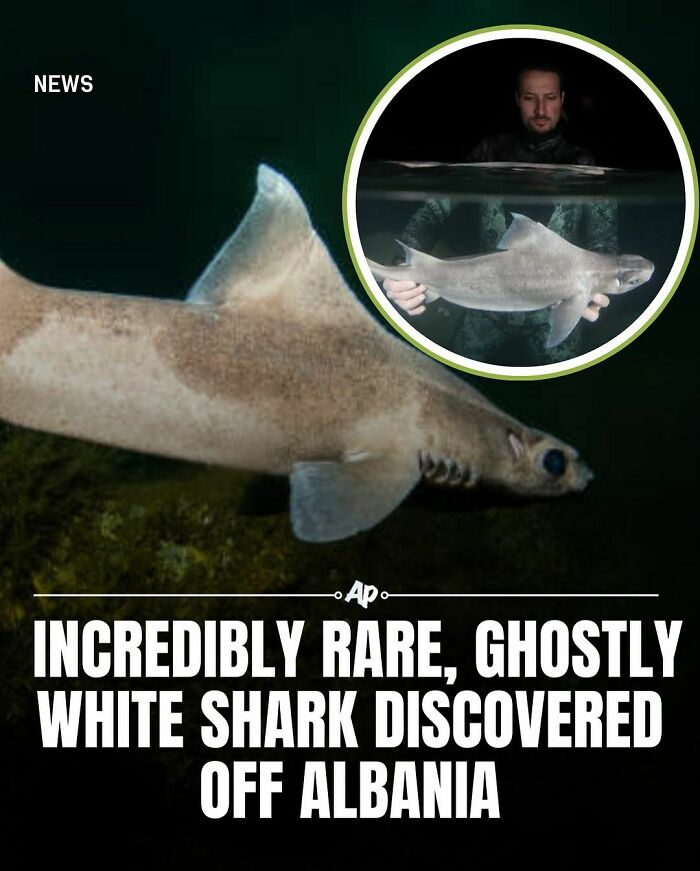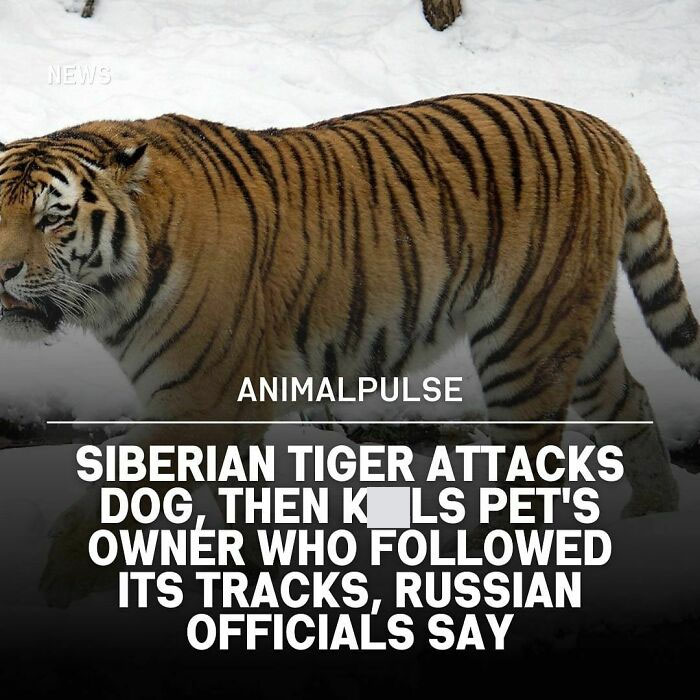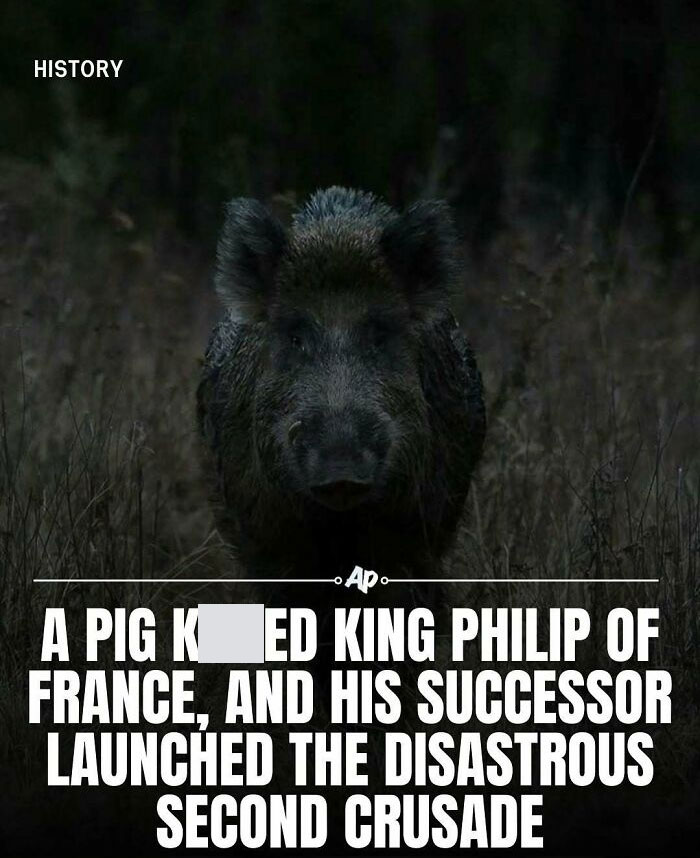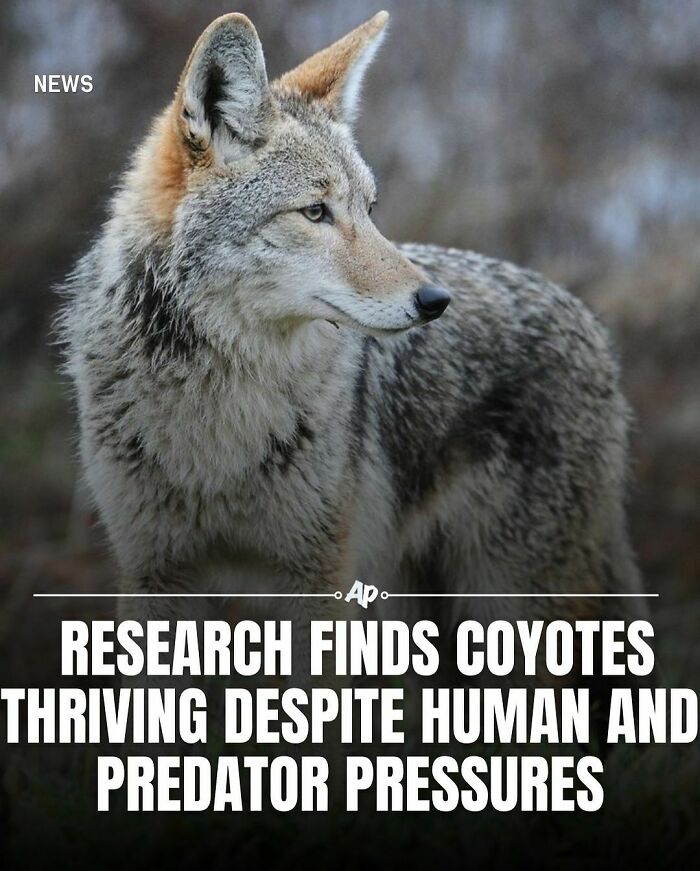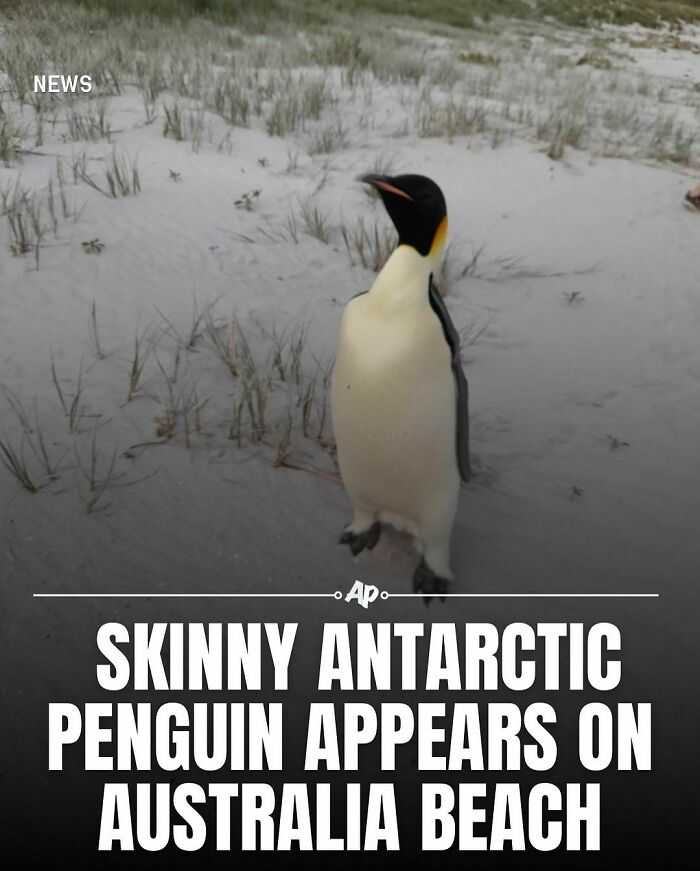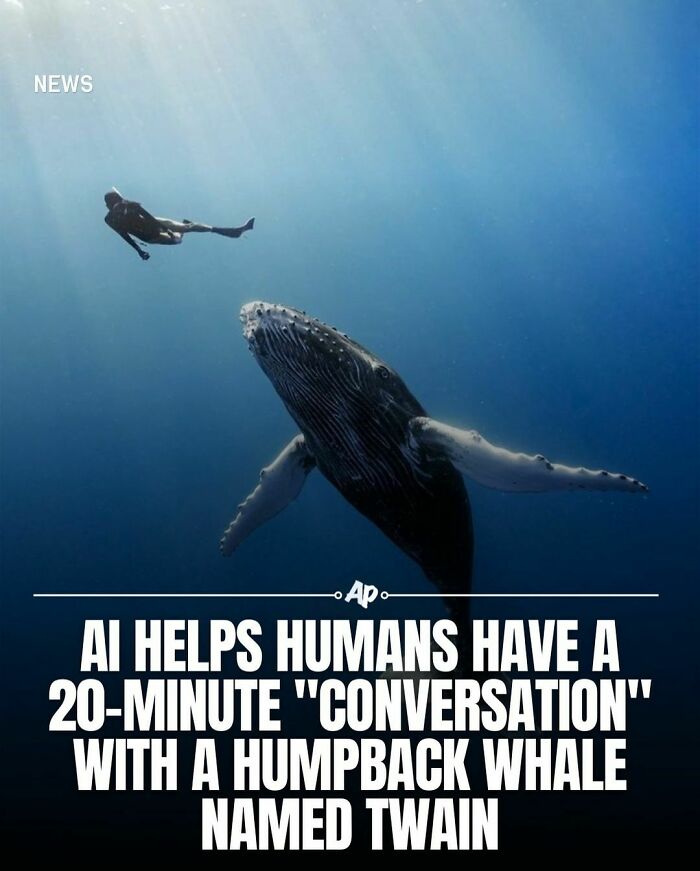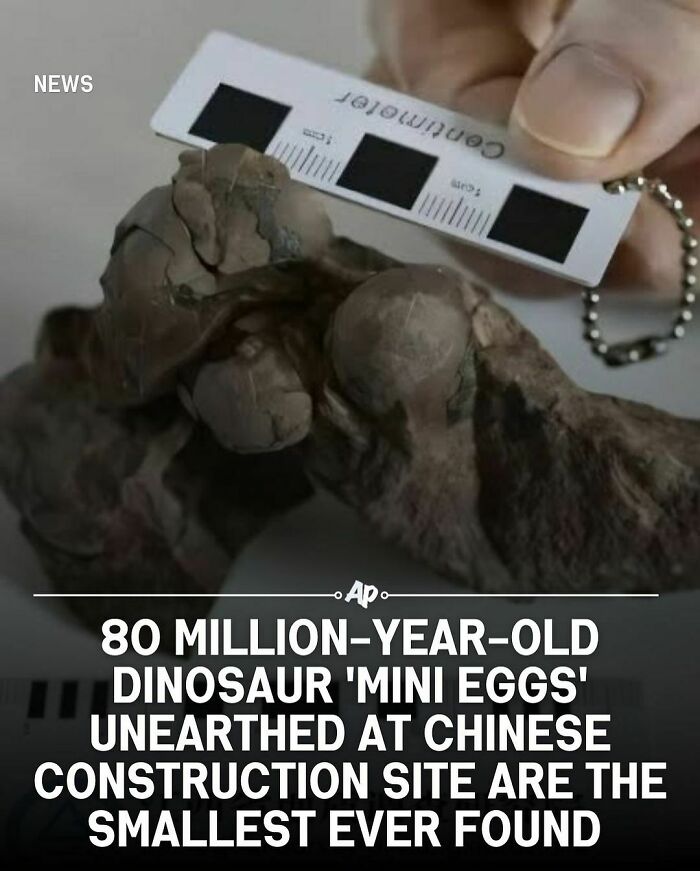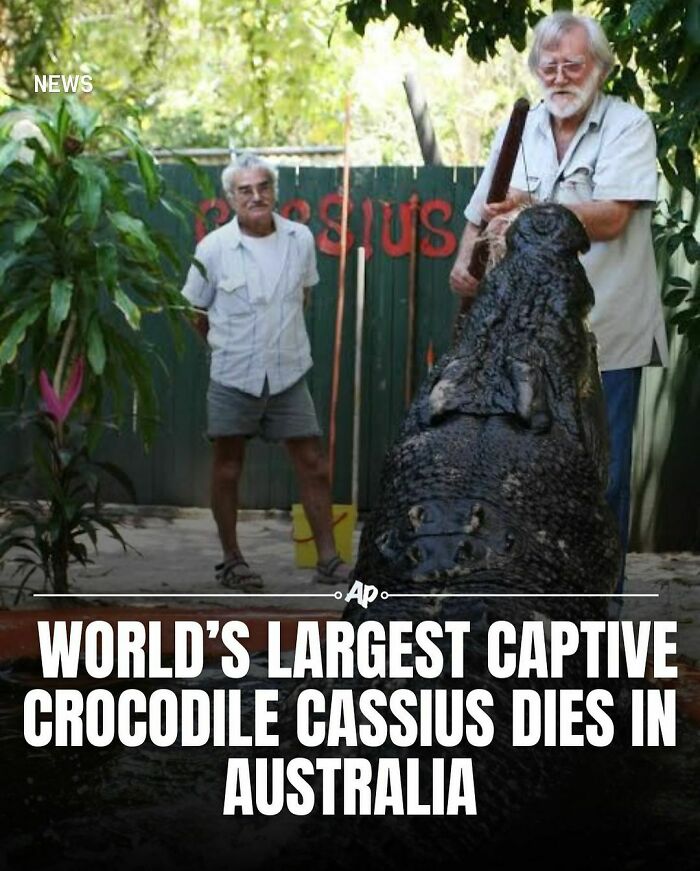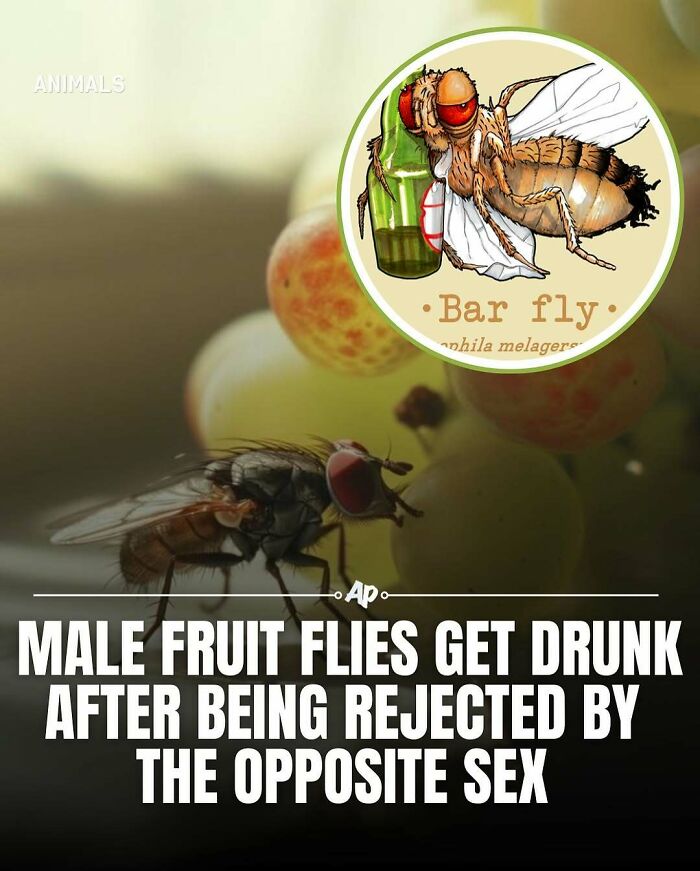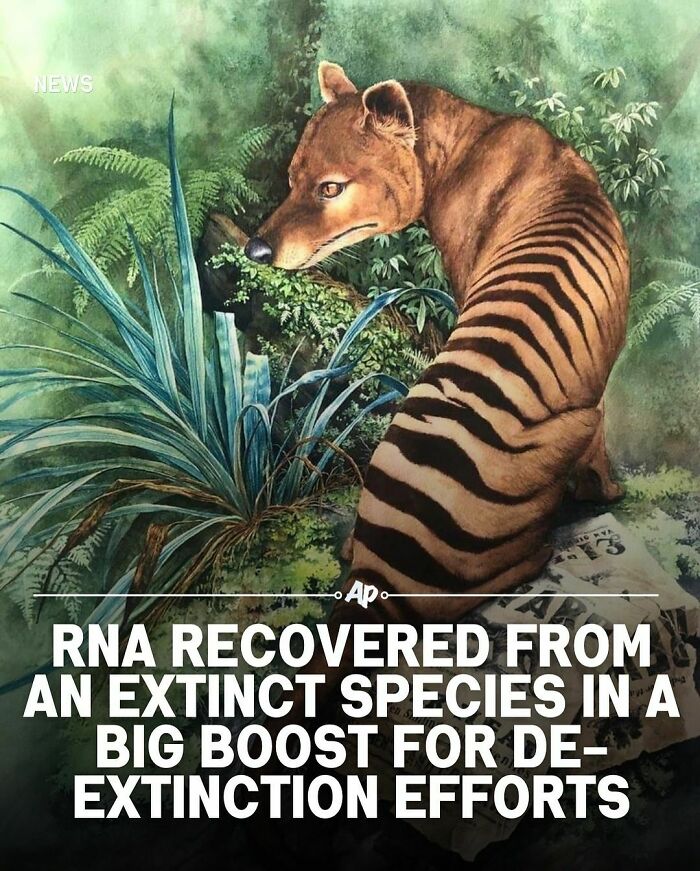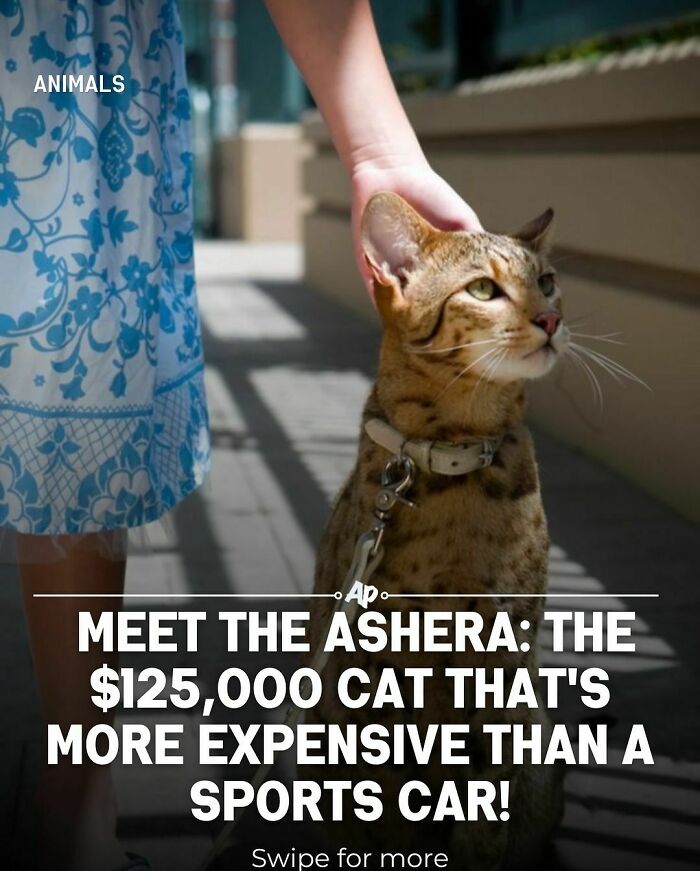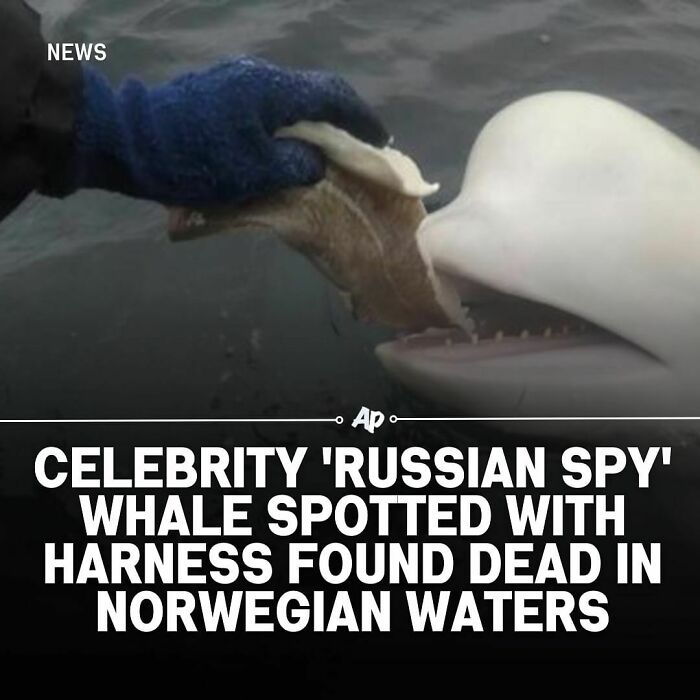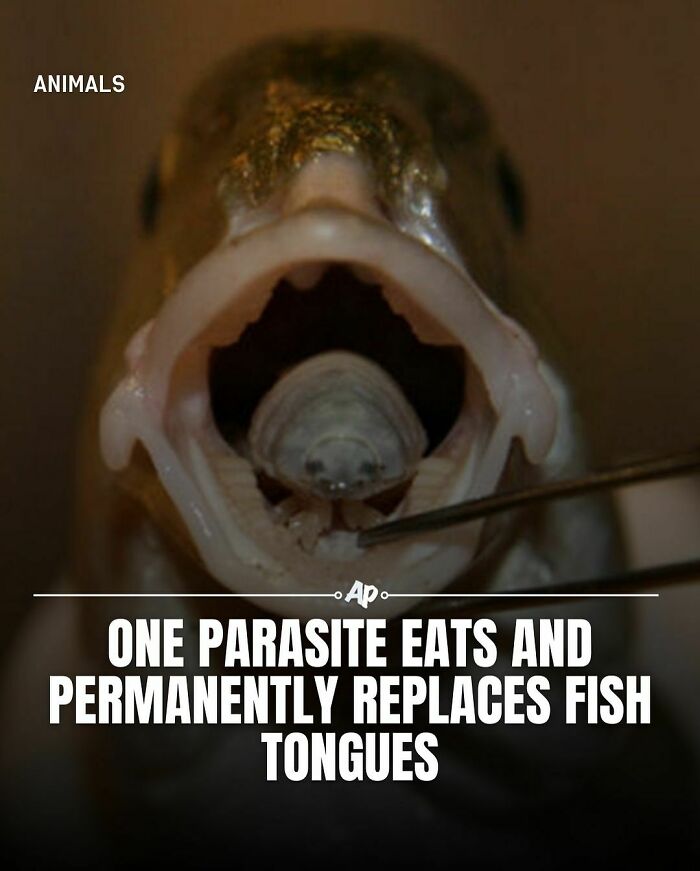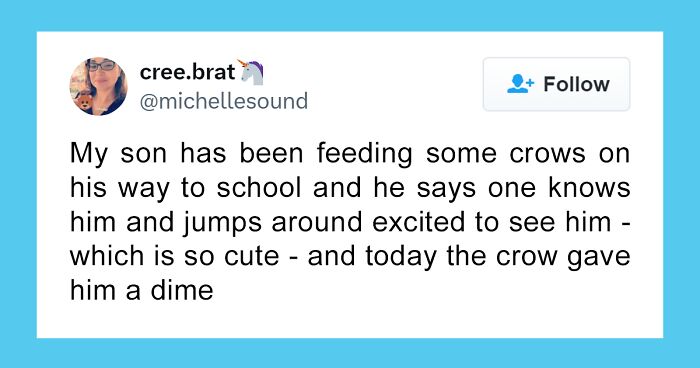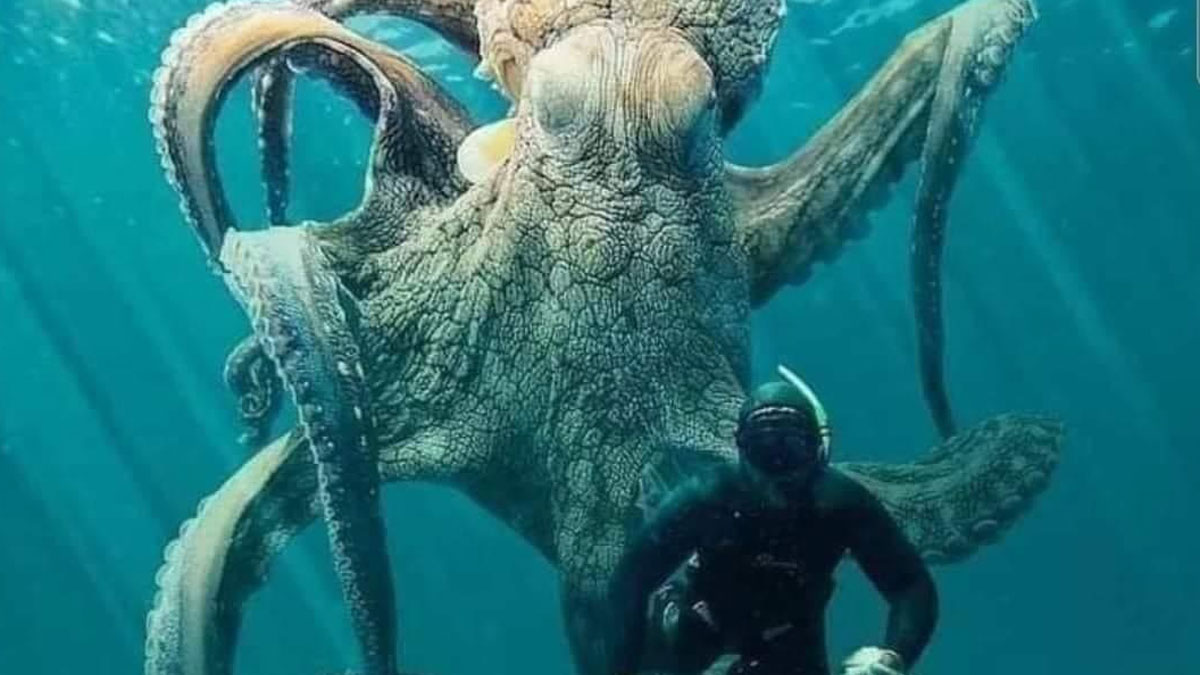
40 Facts About Animals That Might Make You Look Like The Smartest Person In The Room
Interview With AuthorAs winter approaches here in the northern hemisphere, the nights grow longer, the trees barer, and the weather a touch gloomier. It’s the perfect excuse to stay cozy indoors and take a break from the world outside.
Still, we have to get on with life, and to do that, we require a little energy and plenty of good mood. That’s why we’ve put together a collection of fascinating animal facts from the Instagram page Animal Pulse. They’re not quite vitamin D, but they’ll definitely brighten your day and teach you something new along the way!
This post may include affiliate links.
NOTE! The Bird displayed on this picture is not a crow but it’s a Grackle and it was used because of the angry face and it’s a lil bit similar to a crow
Crows never cease to amaze with their incredible intelligence, and it isn’t confined to recognizing threats and holding grudges.
Prior research indicates that crows possess the talent to devise tools and even count.
Stories abound of crows dropping nuts onto busy roads, waiting for cars to crack them open, and then retrieving the food once the traffic stops.
Some crows have even figured out how to use sticks to extract insects from tree bark or fashion hooks from twigs to fish out food from hard-to-reach places.
The study from the University of Washington undeniably contributes to affirming the crows’ place in the intelligence hierarchy among birds.
Crows, it appears, are creatures of memory, holding on to grudges and recalling threats even after a lengthy span of 17 years.
It’s pretty obvious that animals can feel grief. Dogs mourn their owners and each other, and cats mourn the food they were supposed to get 20 minutes ago but didn’t because their human servant tried to sleep in on a Saturday. But one thing that animals don’t do is hold funerals. Cats would probably think it’s sign of personal weakness.
Actually, some animals do hold funerals, and one startling example of an animal that does this is the humble magpie. According to The Telegraph, magpies have been observed engaging in behavior that not only looks like grief, but also a lot like a memorial service. A magpie that encounters the body of another magpie might approach it and peck at it carefully, as if saying, “Frank! Frank! Wake up!” If the body doesn’t respond, the magpie will fly off, and then come back a few minutes later with a few blades of grass, which it will lay next to the body. But researchers haven’t just observed a single bird doing this — other magpies will join in the ritual, each one bringing its own offering of grass. Then the magpies will stand next to the body for a little while before flying away.
This behavior has also been observed in crows and ravens, so not only is it not an anomaly, it isn’t even a behavior that’s confined to a single species. Anthropomorphism rules.
Ever wondered why your heart seems to beat in sync with your dog’s? This is not a figment of imagination, but rather, a scientific fact. Pioneering research from the University of Jyväskylä has made incredible revelations about the profound physiological connection between dogs and their owners.
Animal Pulse has drawn in 23.5K followers on Instagram, and its community is growing larger by the day. It’s easy to see why—the page is packed with facts and stories that are as informative as they are fun. Curious to learn more about the person behind it, Bored Panda reached out to its creator, Solomon Lokia.
Lokia, who grew up in Nigeria, started sharing posts about animals to address how nature and wildlife are often overlooked in his country. “There’s often little emphasis on appreciating or understanding the natural world here,” he told us. “I wanted to encourage a different way of thinking by creating engaging content about wildlife and animals.”
Armed with nothing more than an iPhone 7, Lokia launched his project two years ago, determined to make an impact. “I’m still using it today because, for me, the priority is spreading awareness and sharing my love for animals,” he explained.
Every day, we share our cities with an array of wildlife. From birds and insects to squirrels and raccoons, these creatures navigate the concrete jungles alongside us.
But in Los Angeles, a global city of over 18 million people, there’s another species sharing the living space – the elusive mountain lion.
A recent study from the University of California (UC), Davis, Cal Poly Pomona, and the National Park Service highlights an intriguing aspect of urban wildlife.
The researchers found that mountain lions of Los Angeles are shifting their activities, avoiding typically human-frequented spaces to maintain a safe distance.
Animal campaigners are calling for a ban on the public sale of fireworks after a baby red panda was thought to have died from stress related to the noise.
The Royal Zoological Society of Scotland, a conservation charity that runs Edinburgh Zoo, said Wednesday that it was likely that Roxie, a 3-month-old red panda kit, “died due to stress caused by fireworks being let off across the city centre.”
Fireworks are set off across the United Kingdom on and around Nov. 5, known as Bonfire Night or Guy Fawkes Night, in celebration of the failure of a plot to blow up the Houses of Parliament by a group of dissident Catholics in 1605.
The tradition is centuries old and unique to the U.K., with some towns creating huge elaborate effigies of Guy Fawkes to be burned — sometimes instead building models of contemporary figures, including former prime ministers Boris Johnson and Rishi Sunak.
But animal rights campaigners and pet owners have long complained that the noise causes extreme distress to animals.
The zoological society said that the red panda’s mother also died just five days earlier and that her death could also be related to fireworks noise.
Margays are small, wild cats that live in the evergreen and deciduous forests of Central and South America. They live primarily in trees and use their long, heavy tails for balance.
Mostly nocturnal, Margays hunt in trees and eat birds, eggs, fruit, and small mammals. Female Margays produce a litter of only one kitten every two years. This, along with the fact that Margays have been hunted for their coats, makes these majestic cats endangered.
For Lokia, the most fulfilling part of running Animal Pulse is connecting with an audience that shares his curiosity and enthusiasm. “It’s incredibly rewarding to bring amazing facts about animals to light and see others get excited about them,” he said.
However, updating the page with new and exciting material requires plenty of effort behind the scenes. “Gathering these facts does take time, but I rely on a combination of reputable sources such as scientific journals, documentaries, and credible publications,” Lokia added. “I also keep up with recent discoveries and trends in the field to keep everything accurate and relevant.”
“The process of research and content creation is as fulfilling as sharing it with others,” he noted.
A solitary dolphin in the Baltic Sea appears to be talking to himself, potentially because he’s lonely, according to a new study.
Over 69 days between Dec. 8, 2022 and Feb. 14 2023, the researchers detected 10,833 sounds, including several usually related to communication. These included 2,291 whistles, 2,288 burst-pulses — a rapid series of clicks sometimes associated with aggression — 5,487 low-frequency tonal sounds and 767 percussive sounds. The findings were published in a new study on Oct. 31 in the journal Bioacoustics.
Among these noises, the dolphin produced three distinctive whistles. “Bottlenose dolphins have what are known as signature whistles, believed to be unique to each individual, much like a name,” Filatova said. “If we hadn’t known that Delle was alone, we might have concluded that a group of at least three dolphins was engaged in various social interactions.”
When you hear about Sgt. Stubby’s accomplishments, it’s hard to deny that he’s worthy of his title. Per the Smithsonian’s National Museum of American History, in 1917, Stubby was found wandering the grounds of Yale University, where the 102nd Infantry was training. The regiment adopted Stubby, and he quickly became their mascot, boosting morale with tricks like saluting with his paw. When the division shipped out for France, Pvt. J. Robert Conroy smuggled the dog onto their ship. Conroy’s commanding officer discovered Stubby, but he allowed him to stay when the dog gave him a salute.
But Stubby’s contributions weren’t limited to simple tricks. In February 1918, Stubby followed the 102nd Infantry to the front lines, where he became acutely familiar with the smell of gas. One morning, while the soldiers were sleeping, Stubby smelled a gas attack and roused the regiment with barks and bites, likely saving their lives. Later, Stubby would help locate wounded soldiers on the battlefield. At one point, Stubby even helped his regiment capture a German spy, biting the German’s legs and making him fall over.
For his contributions, Stubby was awarded the rank of sergeant, making him the first dog to be given rank in the United States Armed Forces, per the Smithsonian. In the years after World War I, Sergeant Stubby met several U.S. presidents and received many awards. He died in 1926, and his taxidermied corpse is held in the National Museum of American History.
Cats have nine lives — and apparently they have 900 miles in them, too.
Benny and Susanne Anguiano, a couple from Salinas, California, were reunited with their missing cat after he mysteriously traveled that far.
On a trip to Yellowstone National Park in early June, the couple’s beloved house cat Rayne Beau was spooked and ran off into the dense trees.
Distraught, they spent the rest of their trip desperately scouring the forest for him, at times getting lost themselves. They laid out his favorite treats and toys, hoping to lure him back to their campsite.
Benny Anguiano told NBC News that a Yellowstone employee came by their campsite to warn him that a pack of coyotes had attacked a small dog in the area — and that the couple would be lucky if their cat made it through the night. By the time the trip had concluded, Rayne Beau was still missing, Benny Anguiano said.
“We had to leave without him,” Susanne Anguiano said in an interview with NBC affiliate KSBW of Salinas. “That was the hardest day, because I felt like I was abandoning him.”
But as they were leaving Yellowstone, she spotted a special symbol.
“We were driving along and out of nowhere, these double rainbows appear, and it just knit it all together for me,” she told KSBW.
She said she took her cat’s namesake in the sky as a sign to remain hopeful for Rayne Beau’s return. Sixty days later, her wish on the rainbow came true: Her furry friend had been found.
Through his work, Lokia hopes to encourage more support and involvement in wildlife protection. “The beauty of our world lies in its diversity, and animals are a vital part of that,” he said. “To educate ourselves about them is to step closer to understanding the delicate balance of life on Earth.”
He’s particularly passionate about drawing attention to species that are endangered or struggling because of habitat destruction. “Loving animals isn’t just about admiration—it’s about action. Protecting habitats, supporting conservation efforts, and spreading awareness are how we ensure their survival,” he went on.
“Every creature, from the tiniest insect to the largest predator, plays a role in sustaining ecosystems. When we respect and care for them, we’re also securing our planet’s future.”
“Remember, saving one species could mean saving countless others, including ourselves,” Lokia said. “Let’s act now!”
The old English proverb “you can lead a horse to water, but you can’t make it drink” has been used since the 16th century to describe the difficulty of getting someone to act in their own best interests.
Now, research by equine scientists suggests the use of this phrase has been inadvertently maligning horses for centuries.
Horses have the ability to think and plan ahead and are far more intelligent than scientists previously thought, according to a Nottingham Trent University study that analysed the animal’s responses to a reward-based game.
Horses have a lot more intelligence than most people give them credit for. And they can be curious and have a sense of humor. When I was training my mare to be a trail horse, she'd look ahead at a rock and decide that's where she'd pretend to be frightened so we'd go back to the barn. She gave it up pretty quickly and became a good horse to ride under any condition. But she did think about it.
A wildlife center has developed a way of stopping an abandoned newborn red fox from becoming too used to humans: By feeding it wearing a fox mask.
The Richmond Wildlife Center in Richmond, Virginia, shared a video of the center’s founder, Melissa Stanley, feeding milk to the tiny female kit — the term for a juvenile fox — while wearing the mask in an attempt to prevent imprinting, where animals form a strong bond shortly after birth with the first other animal it receives care from.
“It’s important to make sure that the orphans that are raised in captivity do not become imprinted upon or habituated to humans,” the center said in a Facebook post Tuesday.
“To prevent that, we minimize human sounds, create visual barriers, reduce handling, reduce multiple transfers amongst different facilities, and wear masks for the species,” the update said.
The center added that it was able to find other fox kits the same age and weight as the rescued fox.
New Zealand’s birds must love the ground. The round-faced kākāpō, also known as an owl parrot, is another species of endemic flightless bird, the only flightless parrot on Earth. It’s wings help with balance and to ‘parachute’ when jumping from tall trees to the forest floor. The birds are known to freeze when they feel threatened, to blend into the forest greenery and escape predators. Māori and European settlers used to keep the birds as pets. They’re now listed as Critically Endangered, largely due to habitat loss and predatory invasive species.
Where to see? The small number of remaining kākāpō exist on a handful of predator-free, sanctuary islands, under close supervision, mostly near Stewart Island, Fiordland and Little Barrier Island in the Hauraki Gulf. The general public’s currently unable to view this species in the wild, due to restrictions on protected habitats.
In 1958, Chairman Mao waged war on an unlikely enemy. Noticing that tiny sparrows frequently stole a little bit of grain, he saw an opportunity to increase grain production. ‘Birds are public animals of capitalism’ roared Mao’s government, launching a campaign to exterminate them. Professional hunters and ordinary folk alike chased sparrows, leading many birds to die of exhaustion. People destroyed their nests and smashed their eggs. Unfortunately, Mao didn’t realize sparrows also ate insects that did far more damage to agriculture. The resultant ecological imbalance exacerbated the Great Chinese Famine, which k*lled between 15 and 45 million people.
The leaf sheep sea slug (Costasiella kuroshimae), also known as the “leaf slug,” is a tiny, adorable marine creature that resembles a cartoon sheep with leafy “ears.” Found in waters around Japan, the Philippines, and Indonesia, it’s famous for its unique ability to perform photosynthesis, a process more common in plants. The leaf sheep feeds on algae and absorbs the chloroplasts from it, allowing the slug to harness energy from sunlight – a rare ability called kleptoplasty. Its vibrant, green leaf-like appearance and cute features make it popular among marine enthusiasts and on social media.
In a refreshing attempt to understanding animal consciousness and emotions, a group of researchers from various disciplines have come together to share their thoughts.
The research team was led by Dr. Marcela Benítez, assistant professor of anthropology at Emory University.
“As far as we know, this is the first assessment of how animal behavior researchers across a range of disciplines think about emotions and consciousness in non-human animals,” said Professor Benítez.
The Japanese flying squirrel is a tiny, nocturnal creature that looks like something out of a fairytale. With its big, round eyes and soft, fluffy fur, this squirrel is irresistibly cute. Its small paws and puffy tail make it look like a living plush toy, while its gliding membrane allows it to effortlessly glide between trees. When perched, its wide-eyed expression and petite size create an endearing sight, making it one of the most charming animals in the wild!
In a major victory for animal welfare, 31 macaque monkeys have been rescued from Indonesia’s last remaining ‘monkey dance training village’ by the Jakarta Animal Aid Network (JAAN), with support from World Animal Protection. The rescued troupe, formerly used in cruel street performances, has been relocated from Cirebon to the JAAN rehabilitation center in Cikole, West Java.
These long-tailed macaques, some as young as eight months old, were horrifically torn from the wild and subjected to months of brutal training designed to force them to dance for money in front of tourists and shoppers.
The abusive training process involved starvation, beatings, and chaining the monkeys by their necks. Forced to wear masks and doll outfits, the animals were made to stand on two legs for hours at a time under the constant threat of choking. When not performing, the monkeys were confined to small, single cages, deprived of adequate space and care.
Petco has recently announced the implementation of a new adoption-only policy for rabbits, acknowledging their status as the third-most popular companion animal in the U.S.
As a result of this progressive step, Petco is ending its prior limited pilot program that allowed the sale of commercially bred rabbits. This positive shift underscores Petco’s dedication to fostering connections between caring families and pets in need of loving homes.
“Petco is doing right by rabbits by recommitting to an adoption-only policy. We celebrated the company’s decision years ago to commit to a humane business model that offers adoptable cats and dogs instead of puppies and kittens from massive commercial breeding operations,” said Kitty Block, president and CEO of the Humane Society of the United States (HSUS).
“Adding rabbits to this policy reflects a commitment to animal welfare and sets an example for other retailers,” continued Block. “There’s simply no need for puppy, kitten, or rabbit mills when there are already so many wonderful adoptable companions in need of homes.”
HSUS has been at the forefront of the movement to end puppy sales in pet stores, with eight states and over 475 localities now prohibiting such sales, many of which also include kittens and rabbits.
Researchers have pulled the mummy of a newborn saber-toothed cat that died at least 35,000 years ago from Siberia’s permafrost — and the kitten still has its whiskers and claws attached.
A new analysis of the kitten’s stunningly-preserved head and upper body shows it was just 3 weeks old when it died in what is now Russia’s northeastern Sakha Republic, also known as Yakutia. Scientists found pelvic bones, a femur and shin bones encased in a block of ice together with the mummy. The circumstances of the animal’s death are unknown.
It is extremely rare to find well-preserved remains of saber-toothed cats, and this one belongs to the species Homotherium latidens, according to a study published Thursday (Nov. 14) in the journal Scientific Reports. Saber-toothed cats of the extinct genus Homotherium lived across the globe during the Pliocene (5.3 million to 2.6 million years ago) and early Pleistocene (2.6 million to 11,700 years ago) epochs, but evidence suggests this group became less widespread toward the end of the Pleistocene (also known as the last ice age).
I'd like to remind scientists that just because you can, doesn't mean you should. Just in case they get "ideas"
Cats can definitely recognize the sound of words coming from people, and more and more studies prove that cats rely on interaction with humans in problem-solving,” Dr. Carlo Siracusa, a veterinary behaviorist at the University of Pennsylvania, told Live Science. There is even limited evidence that cats can respond to pointing, and research in the past five years has shown that cats can recognize not only their own names but also those of familiar humans and animals. But can they associate words and objects more generally?
To test this theory, Saho Takagi and her team at Azabu University in Japan gave 31 adult cats a simple word game used to investigate the same ability in babies. The cats were shown two nine-second cartoon clips with recordings of their owners repeating a made-up word over each image. The sequence of clips — a red sun labeled “paramo” and a blue unicorn with the word “keraru” — was repeated until the cats appeared to get bored and paid 50% less attention to the screen.
Make sure you check out the video on this one, and not just because we could watch these foxes do their snow-jumping routine all day long. It’s pretty impressive, watching them pad their way across the surface of the snow, then stop, dive headfirst, and come up with a meal. For a long time, we thought they were just listening for their prey. Now, we know they have the equivalent of a state-of-the-art targeting system that relies on their ability to sense Earth’s magnetic field. The details on what’s going on here are still a little hazy, but researchers found that, when foxes did their snow-jump, they aligned themselves in a position that meant they were jumping about 20 degrees northeast of magnetic north. As long as they were facing this direction, they came up with a k*ll about 73 percent of the time. Any other direction, and that dropped off to about 18 percent. You don’t have to like math to know that’s a huge difference, and it’s thought that the fox is relying on a few different senses to pinpoint the oblivious prey hiding beneath the snow. Their directional sense works like a targeting system, relying on their sense of hearing to detect the prey, then switching over to magnetic targeting. Researchers think that foxes are outfitted with cells in their eyes that are sensitive to the planet’s magnetic field. These cells likely reflect a sort of aura onto their eyes, allowing them to calculate the arc of their jumps, and change direction in midair if they need to. Exactly how it works is still unknown, and while they’d be the only mammal that can do this, there are other precedents for the ability. Birds have “magnetite crystals” in their brains that help them navigate, and that’s impressive, too. But Terminator-style targeting? That’s just awesome.
The African black-footed cat is not a danger to people, or even to wildebeests, gazelle, or jackrabbits, but birds fear it and rats tell stories about it to their children to make them behave. According to Smithsonian, the African black-footed cat is officially the world’s deadliest cat by prey count, it’s just that its prey thankfully does not include us. Black-footed cats are Africa’s smallest cats, in fact at 2 ½ to 4 pounds, they are smaller than the average house cat by more than half. They are also really, really cute — they don’t look much different from a long-haired domestic tabby cat, except they’re small so there’s that extra “aw” factor. But alas, a black-footed cat isn’t going to jump on your lap and make biscuits, because that’s not how it rolls. A single black-footed cat can dispatch between 10 and 14 rodents or birds in a single night, and they have a k*ll success rate of about 60%, which is about three times the success rate of a typical lion. Sorry, so-called “king of the beasts.” What could a single cat possibly want with all those dead rodents and birds? Well, they usually put their heads on spikes as a warning to all the other rodents and birds. Just kidding. The black-footed cat has an extra-fast metabolism, so it literally needs to be constantly hunting and eating just to keep its adorable little body going.
In January 1925, doctors in the isolated Alaskan city of Nome saw signs of an impending diphtheria outbreak. The nearest anti-diphtheria serum was 500 miles away in Anchorage. At the heart of winter, getting the serum seemed all but impossible. In such thick snow, only sled dogs could make the journey. Volunteers set up a relay of sled teams to make the journey as quick as possible, called the ‘Great Race of Mercy‘. The final stage of the journey saw Gunnar Kaasen and his lead dog, Balto, arrive in Nome in the nick of time, saving the city from deadly disease.
Togo was the lead dog for most of the run, Balto was lead dog the final leg. A whole team of other dogs were involved. This was of course when the US department of health was pro-vaccine.
In the depths of the southwest Pacific Ocean, researchers have discovered the largest coral ever documented. Spanning an impressive 111 feet (34 meters) in width, 105 feet (32 m) in length, and standing 18 feet (5.5 m) tall, this colossal organism — so large it’s even visible even from space — resides near the Three Sisters Island group in the Solomon Islands.
The coral, identified as Pavona clavus, is a single, standalone structure, unlike the sprawling networks that typically form coral reefs. Scientists estimate it’s around 300 years old, making it not just a biological marvel that spans the size of two basketball courts, but also a record of centuries of oceanic conditions.
“It is a natural monument that has seen the arrival of the first Europeans to these waters,” San Félix, an underwater cinematographer for National Geographic Pristine Seas who was first to spot the giant coral, said in a statement.
The basking shark is one of the ocean’s most fascinating creatures, known for its massive, open mouth that helps it filter plankton from the water. Despite its intimidating size, this gentle giant poses no threat to humans, showcasing the wonders of marine life and the importance of preserving their habitat
It was the annual Kukur Puja festival in Nepal on Thursday, and dogs across the nation were draped in marigold garlands, marked with celebratory vermillion pigment and presented with overflowing platters of treats.
Like Diwali in India, the five-day Hindu festival of Tihar, being celebrated this week in Nepal, is a festival of lights. Unlike Diwali, Tihar includes the worship of creatures, and Kukur Puja, on its second day, is dedicated to dogs.
As surprising as it sounds, it seems that our online addiction to cat videos, photos, and memes isn’t just for mindless entertainment; it can also feed into environmental awareness.
A recent study published in the peer-reviewed journal Environmental Communication showed how social media has the immense potential of rallying support for wildlife.
And who’s the internet’s favorite feline this time around? It’s the caracal – a wild cat native to Africa with whimsical tufted ears.
The inland taipan is quite possibly the most venomous snake in the world, but that doesn’t necessarily mean it’s the most dangerous snake in the world. A resident of Australia, the taipan is actually very shy, rarely seen, and during the day, it’s only active during a very short period of time. It also lives in a remote part of Queensland, where not a lot of people go, so it’s not like you have to worry that you’re going to find one curled up in your shoe or anything. In fact, snake experts say it’s quite docile to handle, so they can just go ahead and do that, then. If you do get bit by an inland taipan, though, you’re probably going to be in trouble. According to the Australian Museum, this snake’s venom contains a “spread factor,” which actually helps your body to absorb it faster, so that’s awesome. And one bite contains enough venom to k*ll 100 human beings. But on the flip side, only a few people have ever been bitten, and they were able to receive prompt medical care, so they all survived. In other words, this snake is something of a novelty on this list. It’s possibly the most lethal serpent in the world, but so far, it hasn’t ever actually been lethal to anyone (that we know about).
Killed. Look, there, it works. You can read the word 'killed' on BP!
The U.S. Fish and Wildlife Service and Arizona Game and Fish Department have confirmed the tragic death of Hope, a Mexican gray wolf (F2979) who had been living west of Flagstaff, Arizona, since June. Hope was found dead on November 7th near Forest Service Road 2058 and East Spring Valley Road.
This devastating loss further imperils the critically endangered Mexican gray wolf species, which struggles to recover with fewer than 260 individuals remaining in the wild.
Authorities and conservation nonprofits are offering a combined reward of $103,500 for information leading to a conviction and arrest in this case. No additional details about Hope’s death have been released as the investigation is ongoing.
Hope was first documented north of Interstate 40 near Flagstaff in the summer of 2024, she was captured, GPS-collared, and released in July. DNA linked her to the Tu Dil Hil pack in the MWEPA. Efforts to translocate her and a companion wolf back to the MWEPA began in October but was haulted when she was found dead. The fate of her companion remains unknown.
Check with Cody Roberts ... the Wyoming man who captured and tortured a wild wolf back in April. 🤬
U.S. Interior Secretary Deb Haaland announced Wednesday that the Apache trout — Arizona’s state fish — has been removed from the federal list of endangered and threatened species following more than five decades of recovery efforts.
Haaland traveled to Arizona for the announcement, which is considered an important conservation success marking the first sportfish and the first trout to be removed from the list.
“This recovery is a testament to the importance of the Endangered Species Act and its tools and resources that are allowing the Interior Department and the federal government to protect vital species in every corner of America,” said Haaland.
She credited joint efforts by federal, state and tribal officials along with $5.1 million from the Biden administration’s Investing in America program
The California Fish and Game Commission unanimously voted to protect western burrowing owls throughout California as a “candidate” species under the California Endangered Species Act.
“After decades of effort to safeguard declining burrowing owl populations in California, the species has finally been afforded interim state protections where they’re most needed — at least for the time being,” said Pamela Flick, California program director with Defenders of Wildlife. “With burrowing owls no longer found in one-third of their former territory statewide, these temporary protections aren’t coming a moment too soon.”
Burrowing owls statewide will be protected while the California Department of Fish and Wildlife conducts a full status review, which could last 12 to 18 months. The commission will then vote on whether to protect the burrowing owls as endangered or threatened under state law.
“At long last, there’s a glimmer of hope for California’s rapidly disappearing burrowing owls, who desperately need protection,” said Jeff Miller, a senior conservation advocate at the Center for Biological Diversity. “Burrowing owls have dwindled and vanished at an alarming rate around the state as their homes are bulldozed for irresponsible sprawl development. I’m thrilled they’re safeguarded for now and look forward to these adorable little owls getting permanent protection.”
According to Oceana, crocodiles and related species have a PR problem: If you were to encounter them face to face, they’d probably be just as unhappy (and eager to get away) as you. However, that’s not the case with the saltwater or estuarine crocodile, a species with a well-documented history of territorial aggression against humans. Hardly surprising, considering that it chomps down with a force of nearly 17,000 newtons, the strongest bite force ever measured of any living land animal. For perspective, that’s one-fourth of the car-crushing bite force of a Tyrannosaurus rex (via Business Insider).
Active year-round, saltwater crocodiles are found across Australia, from northern coastal areas and drainages to islands about 60 miles from the mainland (via the Australian Museum). While it can survive in seawater, these reptiles prefer living in brackish (somewhat salty) water. National Geographic describes this 23-foot, 2,200-pound carnivore as a “classic opportunistic predator” that snacks on just about anything unfortunate enough to pass by their territory: birds, sharks and other large fish, water buffalo, wild boars, monkeys, and even humans. Few prey can survive a surprise attack from the world’s largest reptile: It waits patiently under the water’s surface until it spots its next target, after which it comes out of hiding while thrashing its enormous tail. It quickly nabs its shocked prey, drowning it before turning it into lunch. Also, wounds from crocodile attacks tend to get infected, requiring prompt antibiotic treatment.
A recent study has revealed the extraordinary capacity for reverse development in the ctenophore, or comb jelly, specifically in the species Mnemiopsis leidyi. Comb jellies seem to use the strategy of aging in reverse as a survival strategy when they are under pressure.
This surprising discovery, led by the University of Bergen, has added fresh perspectives to the field of developmental biology, suggesting that life cycle plasticity might be more prevalent in the animal kingdom than previously assumed.
Traditionally, animal life cycles follow a well-established sequence: birth, growth, reproduction, and death.
Only a few exceptions defy this pattern, such as the “immortal jellyfish” Turritopsis dohrnii, known for its ability to revert from an adult medusa to a polyp stage.
Now, this remarkable club of life-cycle-reversing organisms includes the comb jelly Mnemiopsis leidyi, adding a new chapter to what is understood about animal regeneration and development.
Just imagine a world where humans no longer exist, who would take over? Well, it may not be another mammal. Believe it or not, octopuses could be the ones to dominate Earth after humans.
Scientists have recently made a riveting claim that these eight-limbed, marine invertebrates could become the dominant species on Earth should homo sapiens vanish from existence. It’s an intriguing idea, but how is it possible?
While the Greenland shark (Somniosus microcephalus) may not have the same fame as the great white shark, it holds an impressive distinction: it is the longest-living vertebrate species known to science. These remarkable sharks can live for up to 400 years, surpassing the previous record-holder, the bowhead whale, which can reach around 211 years. A Greenland shark alive today could have been swimming the oceans as far back as the 1600s — more than four centuries ago!
Despite their ancient existence, the Greenland shark was only recently recognized as the longest-living vertebrate, primarily because scientists had long struggled to determine its age. Unlike most sharks and other vertebrates, which have hard tissues like spines that form growth rings (much like the rings inside a tree trunk), Greenland sharks lack these structures, making age estimation a challenge. It wasn’t until Danish scientists stumbled upon a breakthrough involving human cadavers and some forensic ingenuity that the mystery of the shark’s age was finally unravelled.
I am both deeply curious about the "human cadaver" factor and deeply wary of turning to Google for more info.
If you’ve ever wondered what it would be like to encounter a vicious Velociraptor — or a version closer to the man-sized “Jurassic Park” ones than the turkey-sized, scientifically accurate ones — then look no further than the southern cassowary. According to the official website of the Queensland Government, it is the “heaviest flightless bird” in Australia, and the only one among the three known cassowary species found in the country. It also happens to be the Guinness World Record-holder for the title of “most dangerous bird,” and rightly so: It can k*ll you with a single, well-aimed kick. Standing over 6 feet tall, the southern cassowary sports bristly black plumage, a dark blue neck, a lighter shade of blue on its head, and two red skin flaps hanging from its neck. On top of its head sits a hollow, crest-like casque, making this bird a truly striking sight. You’ll want to stay out of striking range, though, as it also possesses strong, muscular legs and three-toed feet with sharp claws. Its inside claw is easily the most dangerous one, growing up to 5 inches long. In one swift, powerful motion, it can cut its target wide open, damaging the organs and causing the victim to bleed out. Fortunately, the cassowary isn’t known to be aggressive and will only attack if it feels the need to defend itself, its chicks, or its nest (via Scientific American).
An angry-looking myna bird has become a viral video star after landing directly in front of a highway traffic camera in New Zealand.
The black-and-yellow tropical bird stares curiously into the camera overlooking a section of road near Auckland, New Zealand’s largest city, its beak open as it appears to squawk loudly. It then flies off before returning for a few more seconds.
Plot twist: it was hand reared by a driver who likes to break the speed limit on that road.
The tarsier’s an animal that seems to be taking the phrase ‘eyes bigger than your stomach’ as a literal challenge. The little, leaping primates have massive eyes, long, thin alien-like fingers and heads that rotate like they’re auditioning for a part in a remake of The Exorcist. Sadly, their cuteness has made them popular over the years as pets or as props forced to pose for tourist photos, causing them distress.
Where to see one? The International Union for Conservation of Nature (IUCN) lists more than a dozen species of tarsier across South-East Asia, including the Philippines, Malaysia and Indonesia, several of which are Endangered or Critically Endangered. Bohol in the Philippines is a good place to see tarsiers; try one of the local sanctuaries, such as Tarsier Conservation Area.
If you've never seen Ze Frank's video about this animal you are missing out. He's beyond hilarious. https://www.youtube.com/watch?v=6Jz0JcQYtqo
Though his feathers are changing now, Pesto’s beak will remain pure black for the next two years, until he hits sexual maturity. Then, he’ll get elongated orange spots on either side of his bottom beak, a characteristic of adults.
Pesto was born in late January, which makes him about 9 months old. His birth was a big deal for the aquarium, which didn’t have any king penguin chicks hatch in 2023. He was also the only king penguin to hatch in 2024.
When he was born, Pesto weighed less than half a pound. But as he got older, he began to rapidly balloon in size, eventually tipping the scales at 50 pounds. For comparison, adult king penguins usually weigh between 31 and 37 pounds. Pesto is the biggest chick Sea Life Melbourne has ever had.
The aquarium put Pesto on public display in April. But it wasn’t until staffers held a gender reveal party in September that the massive baby bird became a worldwide celebrity.
The main fact the vast majority of people choose to ignore: Animals do feel pain, distress and do mourn. Especially animals which live in social active groups do have complex feelings. Birds and mammals have close friends, play and feel a bond with their offspring. As a horse owner (one is adopted from a rescue) I am appalled to see what humans do to horses to show their superiority. From cutting off tails (because too lazy to braid them), over enforcing head, neck and tail positions by painful contraptions (for likes and ribbons) to causing stampedes by helicopter, scaring the s**t out of every animal living there and let dieing horses and their carcasses rot and poison "delicate ecosystems" because feral (and placing non-native cattle for an over-saturated meat industry instead). Do animals who interact with people need to learn some people behaviour? Big fat yes. Does this involve scaring them, let them feel pain and ignore their social skills? Big fat no. Trust works for both.
There were two or three much more interesting, shorter lists in amongst all this. A little self-editing by BP might be a good idea.
The main fact the vast majority of people choose to ignore: Animals do feel pain, distress and do mourn. Especially animals which live in social active groups do have complex feelings. Birds and mammals have close friends, play and feel a bond with their offspring. As a horse owner (one is adopted from a rescue) I am appalled to see what humans do to horses to show their superiority. From cutting off tails (because too lazy to braid them), over enforcing head, neck and tail positions by painful contraptions (for likes and ribbons) to causing stampedes by helicopter, scaring the s**t out of every animal living there and let dieing horses and their carcasses rot and poison "delicate ecosystems" because feral (and placing non-native cattle for an over-saturated meat industry instead). Do animals who interact with people need to learn some people behaviour? Big fat yes. Does this involve scaring them, let them feel pain and ignore their social skills? Big fat no. Trust works for both.
There were two or three much more interesting, shorter lists in amongst all this. A little self-editing by BP might be a good idea.

 Dark Mode
Dark Mode 

 No fees, cancel anytime
No fees, cancel anytime 














